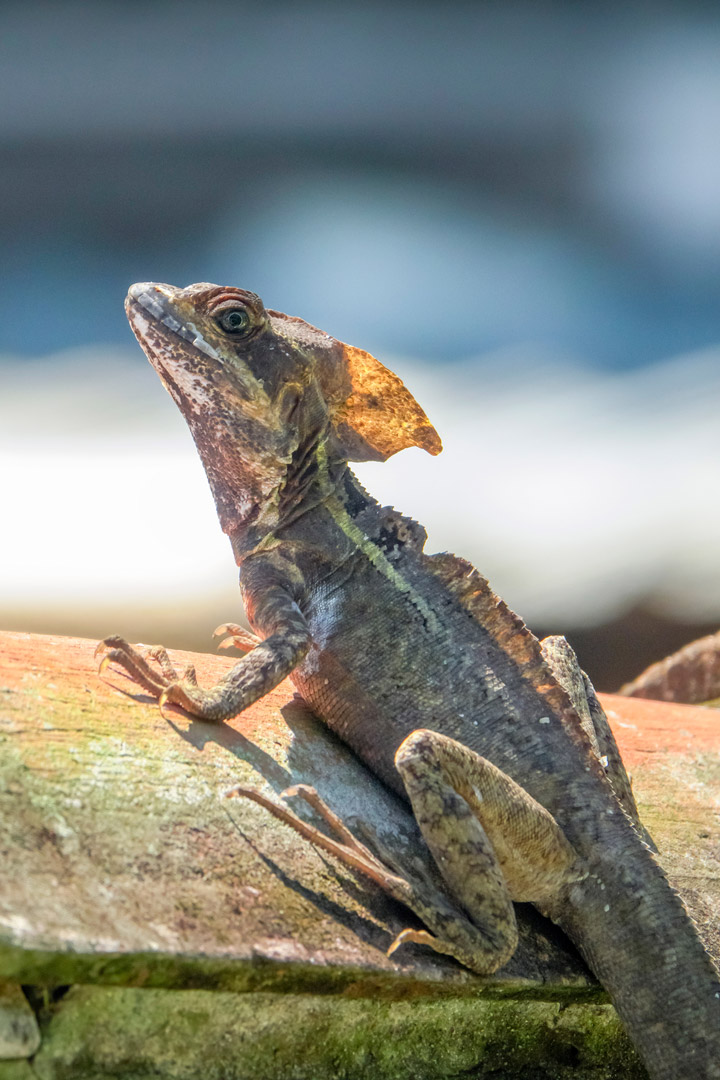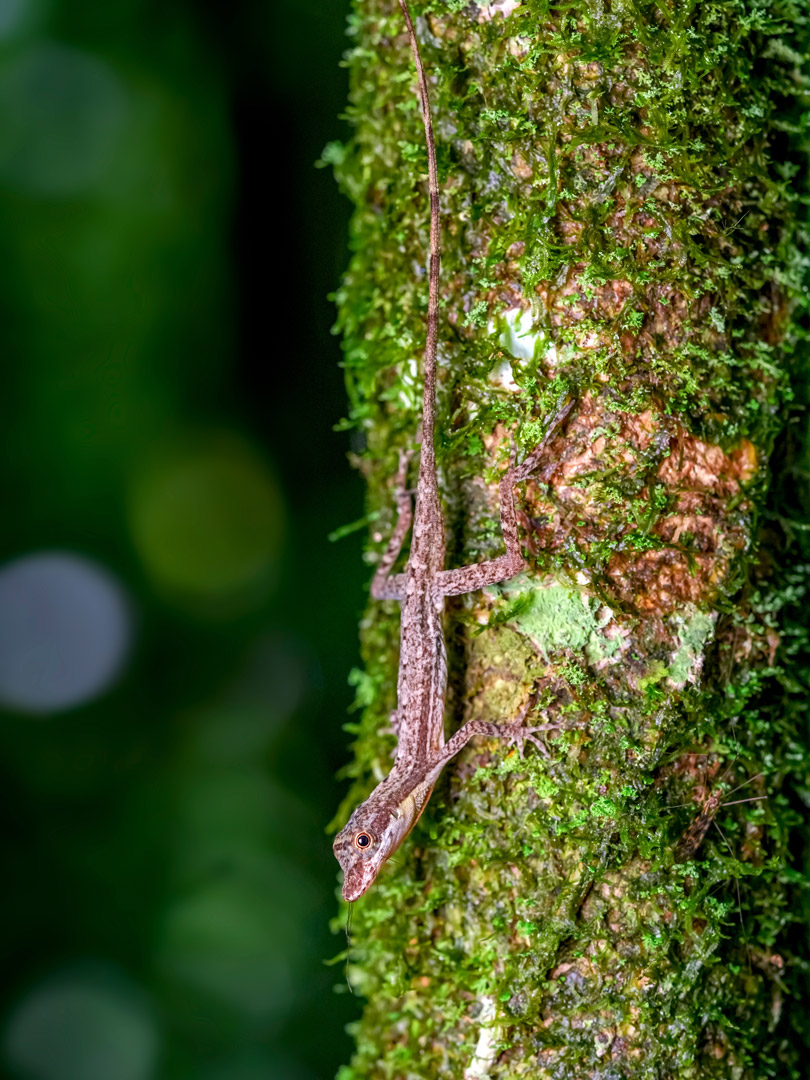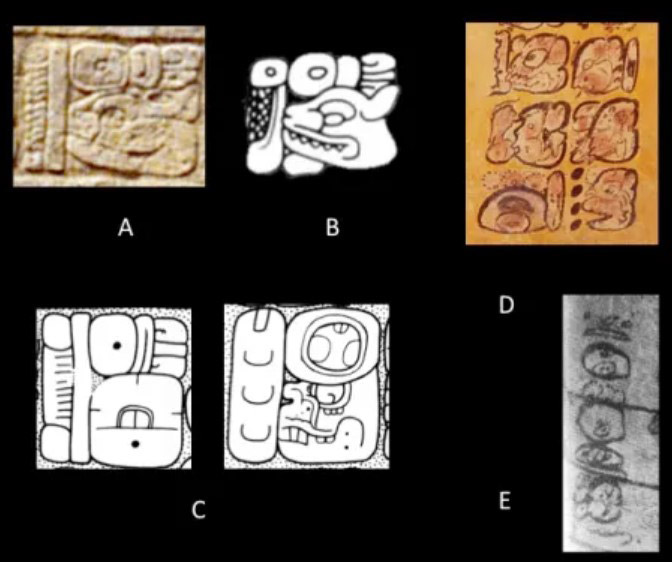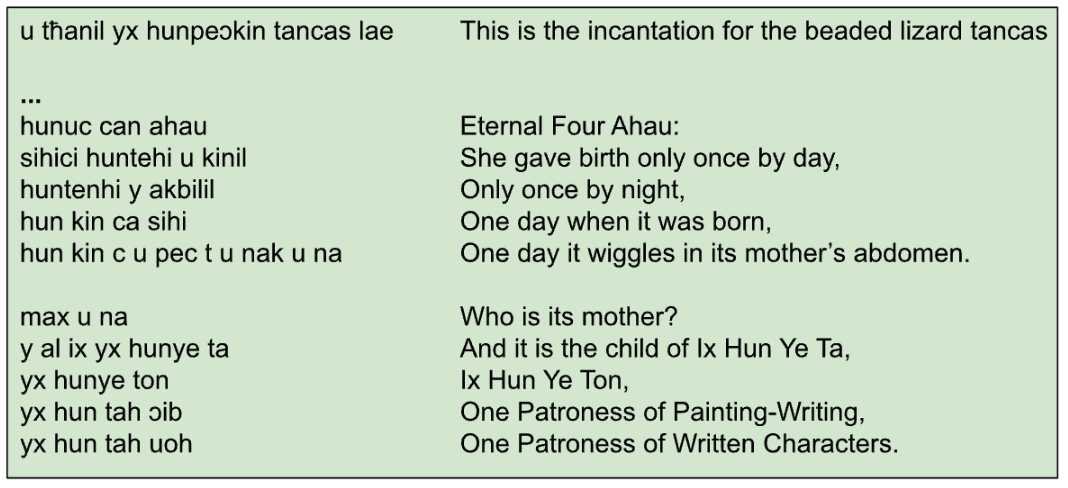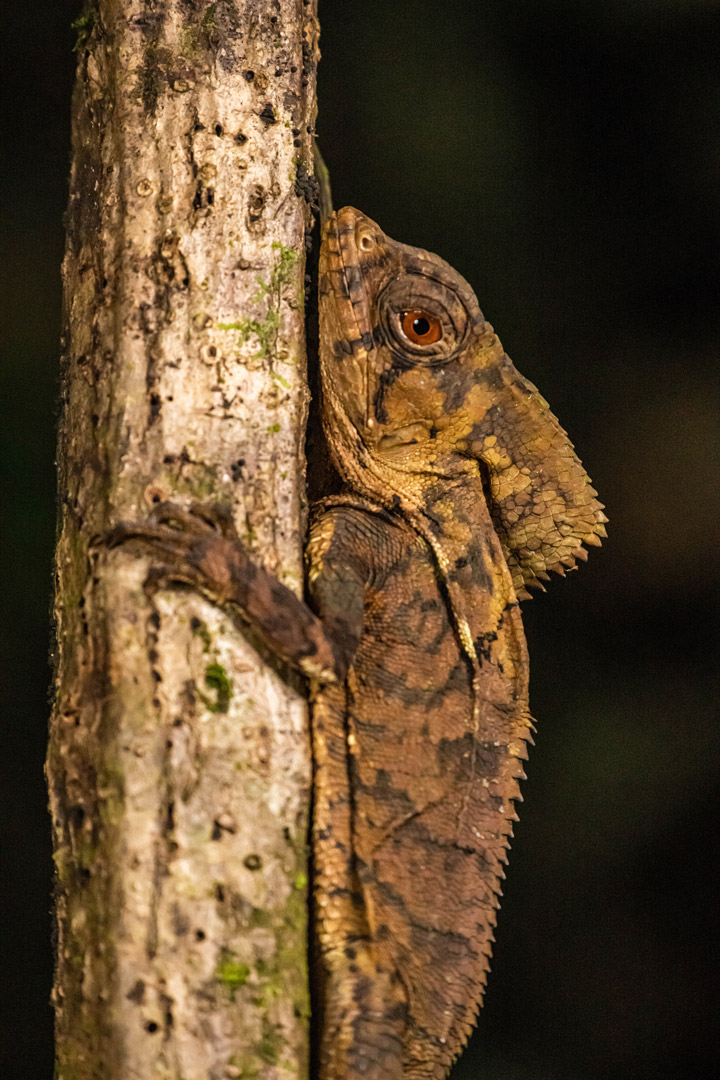Written by Biologist Pamela Alejandra Jerez Pazos On August 19, 2024
Edited by Sergio D’angelo Jerez
One of the most diverse and fascinating groups of reptiles are lizards, which occupy a fundamental position in the ecosystems of the entire planet. These extraordinary creatures can have a wide variety of shapes, sizes and behaviors, which not only reinforces the importance of studying them, but also makes them very interesting.
Basiliscus vittatus. La Buga, Livingston; March 2021. Photo by Victor Mendoza.
Lizards constitute a group of four-limbed organisms with scales, an external ear opening, and movable eyelids (Almaraz, 2024).
In Guatemala, there are around 106 species, divided into 17 families among which are chameleons, skinks, iguanas, and geckos. The families are: Anguidae, Corytophanidae, Dactyloidae, Eublepharidae, Gekkonidae, Gymnophtalmidae, Helodermatidae, Iguanidae, Mabuyidae, Phrynosomatidae, Phyllodactylidae, Scincidae, Sphaerodactylidae, Sphenomorphidae, Teiidae, Xantusiidae, and Xenosauridae.
Norops sp. Natural Reserve Tapon Creek, Livingston. David Arrivillaga, October 2021.
Given their great diversity in the region, it is not a surprise that these animals were portrayed by the Maya in the past, and that they made their way into some more modern Maya cultural expressions. How? Take a look at the following examples:
To begin with, some of the rulers in the Maya civilization were named after lizard species. In Chiapas (Mexico) there was at least one ruler named Aj Sak Teles, which means the White Lizard (Davletshin, 2009; Houston et al., 2017). Not far away, was registered a second name including the name of a lizard, and curiously, a color as well. The name is Aj Yax Tolook, which means the Green and Blue Lizard, and it was found on a polychrome cylindrical vessel from the Lord of Petén (Houston et al., 2017). It is speculated that this name in particular may be referring to a species of basilisk, which in addition is believed to have been used for medicine by mashing its brain (Houston et al., 2017).
Probable names of lizards in Late Classic Maya texts. Houston et al., 2017.
Later on, during the colonial period, lizards were also included in cultural expressions. Such is the case of the healing chants of the Ritual of the Bacabs in ancient Maya culture where certain illnesses were often explained as being caused by animals or animal-like beings. More specifically, the chant for sickness caused by the bite of a yx hunpeɔkin refers to the beaded lizard (Heloderma horridum), a larger relative of the Gila monster, which can still be found in some parts of Chiapas and Guatemala (Knowlton, 2015).
Excerpt of the Ritual of the Bacabs where a beaded lizard is mentioned. Knowlton, 2015.
In conclusion, there is no doubt that the ancient Maya civilization valued these creatures, as shown through their incorporation of lizards in imagery, symbolisms, and even rulers' names. Many more examples, such as iguana depictions in Maya art, stand out apart from the few examples described in this article, and show once again that the Maya people had a strong connection with their environment.
Corytophanes cristatus. Natural Reserve Tapon Creek, Livingston. David Arrivillaga, October 2020.
References
- 2024
- Especies del Suborden Lacertilia en la Preparatoria número cuatro. Vida Científica Boletín Científico De La Escuela Preparatoria No 4, 12(23), 37–38.
Available online: https://doi.org/10.29057/prepa4.v12i23.
- 2009
- An unusual sign: the “Wrinkle” logogram in Maya writing. In Wayeb Notes (ISSN 1379-8286). No. 39.
Available online: https://www.wayeb.org/notes/wayeb_notes0039.pdf.
- 2019
- Anfibios y reptiles en el mundo maya. Sociedad Científica de DZAN A.C.
Available online: https://www.socied.org/single-post/2019/09/27/anfibios-y-reptiles-en-el-mundo-maya.
- 2017
- The Lizard King. Maya Decipherment.
Available online: https://mayadecipherment.com/2017/06/15/the-lizard-king/.
- 2015
- The Maya Goddess of Painting, Writing, and Decorated Textiles. The PARI Journal, 16(2), 31–41.
Available online: https://www.mesoweb.com/pari/publications/journal/1602/Knowlton_MayaGoddess.pdf.


